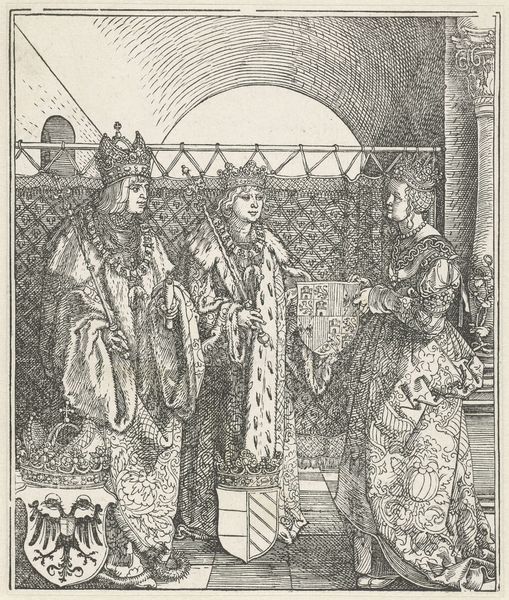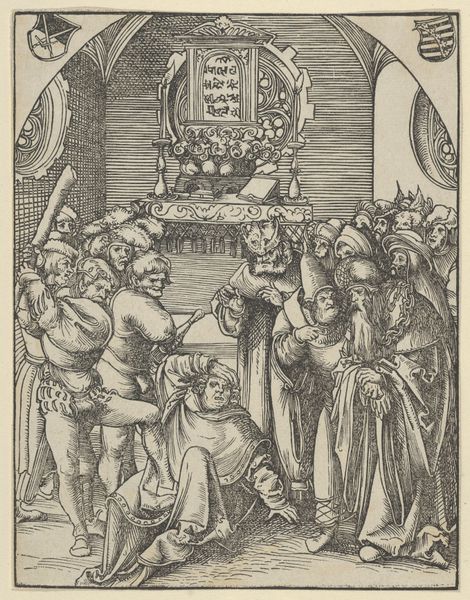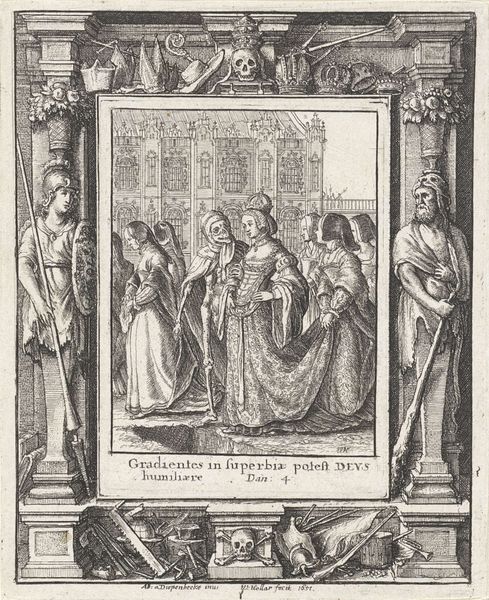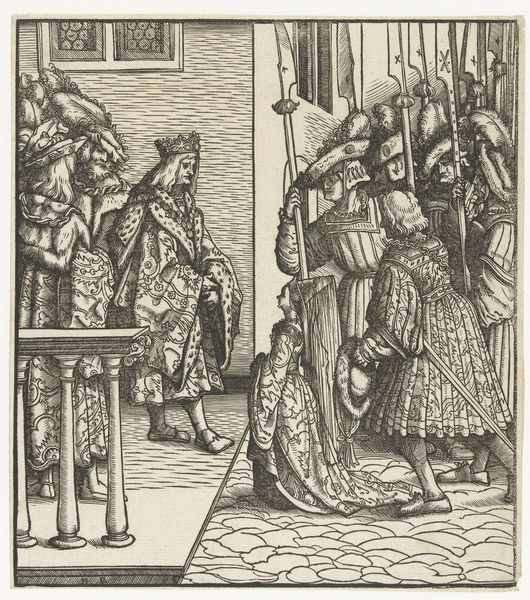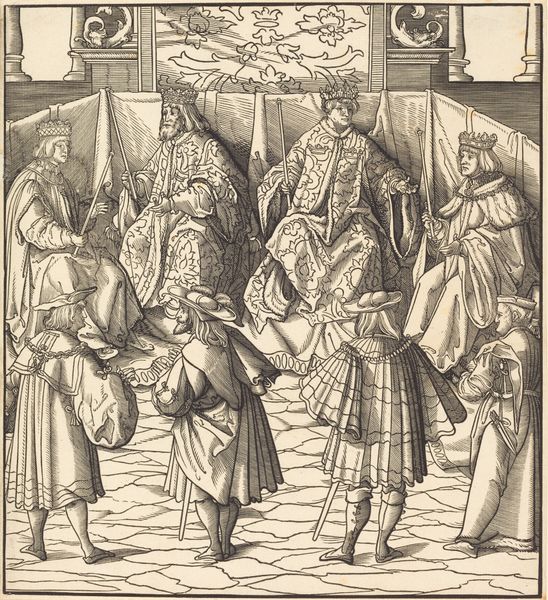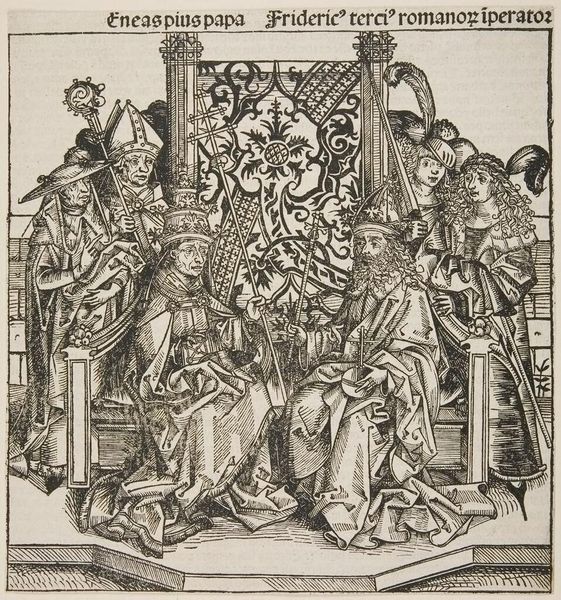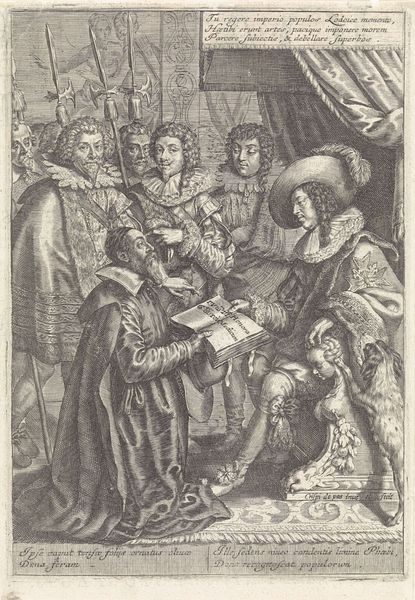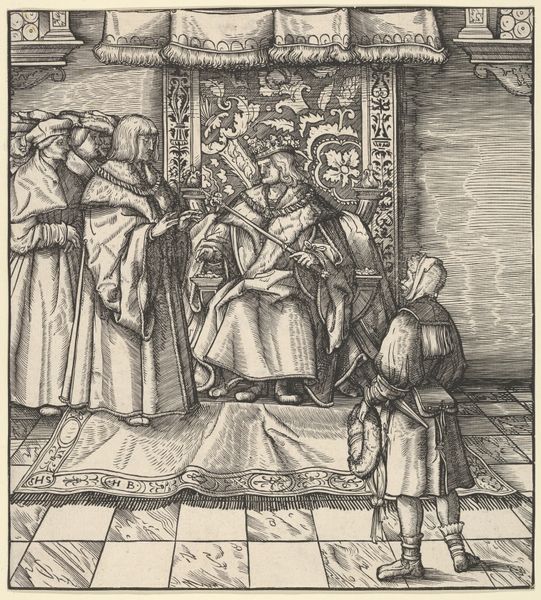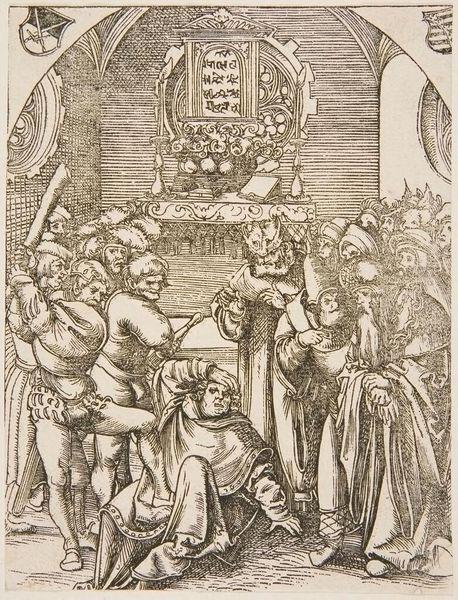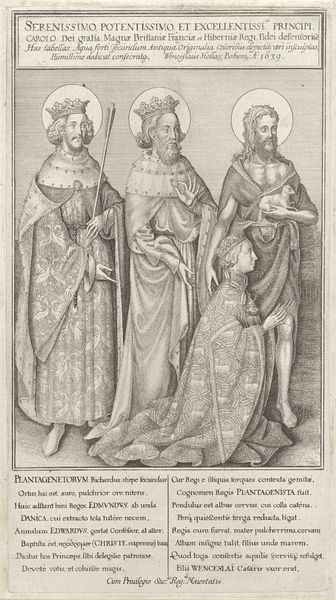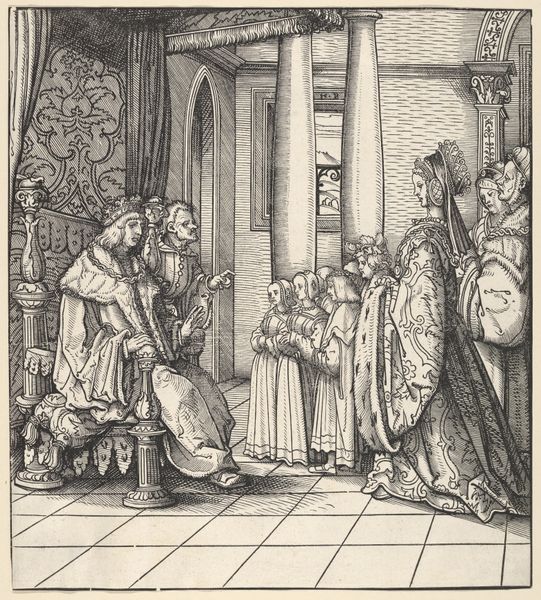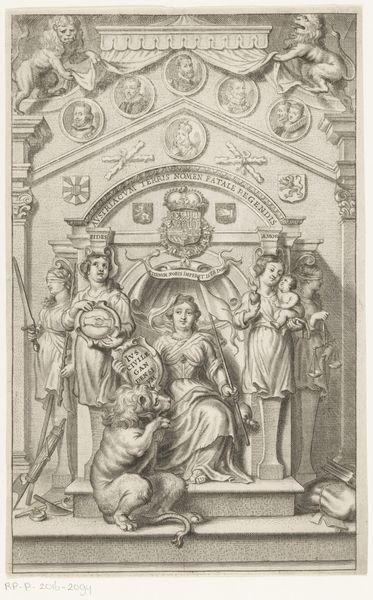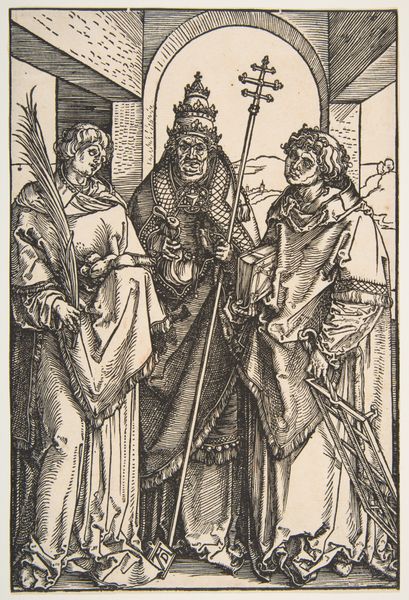
Het Weense dubbelhuwelijk: Maximiliaan bespreekt met de koning van Hongarije en zijn broer de huwelijken tussen hun (klein)kinderen 1515
0:00
0:00
albrechtdurer
Rijksmuseum
print, woodcut
#
pen drawing
#
mechanical pen drawing
# print
#
pen illustration
#
pen sketch
#
figuration
#
ink line art
#
group-portraits
#
pen-ink sketch
#
woodcut
#
pen work
#
history-painting
#
northern-renaissance
Dimensions: height 177 mm, width 150 mm
Copyright: Rijks Museum: Open Domain
This print, made by Albrecht Durer, captures the essence of a significant political event through the skilled manipulation of line on a wood block. The choice of wood as a medium is crucial. It allowed for relatively quick reproduction and dissemination of this image. Note the crispness of the lines, achieved by carving away the negative space around the figures and architectural details. This painstaking process demanded both precision and an understanding of how each cut would translate into the final print. Durer’s mastery is evident in the textures he creates, from the ornate fabrics of the royal garments to the solid presence of the heraldic shields. Woodcuts like these weren't just aesthetic objects. They were powerful tools for shaping public opinion and documenting historical moments. Consider the labor involved, not just in the artist’s studio, but also in the wider network of printers and distributors who brought these images to a broad audience. Understanding this social context helps us appreciate the full significance of Durer’s work, bridging the gap between fine art and the everyday world of political communication.
Comments
No comments
Be the first to comment and join the conversation on the ultimate creative platform.
